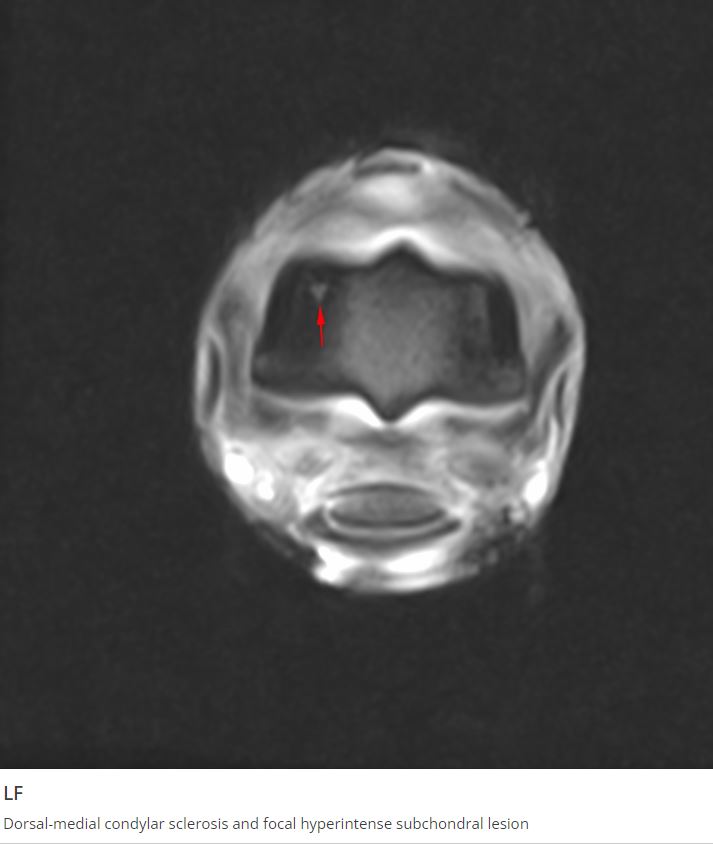UPDATE
We went ahead and did a standing MRI while the insurance claim was still open.
Mild bruising of the coffin bone and navicular bone in both front feet. No degenerative or soft tissue injuries. The bruising is more evident in the left front.
The other significant finding was a focal injury to the subchondral bone and overlying cartilage of the left front fetlock.
All things we couldn’t see on x-ray or ultrasound.
We suspect the NQR feeling I was getting was from the bone bruising in her feet, and probably why she initially felt better when we added shoes and pads.
The intermittent severe lameness is likely the result of the fetlock injury getting angry and irritated.
I haven’t spoken with my vet yet. But based on the recommendation of the vet who did the MRI our plan will likely be to give her most of the summer off. Starting with stall rest and then small solo turnout. We’ll keep shoes and pads on since fly stomping season is almost here. We may also do osphos and a biologic in the fetlock. And we’ll bring her back slowly in the fall.

 but seriously, after watching that rope walk…
but seriously, after watching that rope walk…
 ) for 2 months. He’s allowed full turnout with aquatread and hot walker therapy. For back ground, he was laid up back in July of last year with a bone bruise in his hock, stall rest with therapy for 6 months, came back in January and promptly injured himself again
) for 2 months. He’s allowed full turnout with aquatread and hot walker therapy. For back ground, he was laid up back in July of last year with a bone bruise in his hock, stall rest with therapy for 6 months, came back in January and promptly injured himself again 